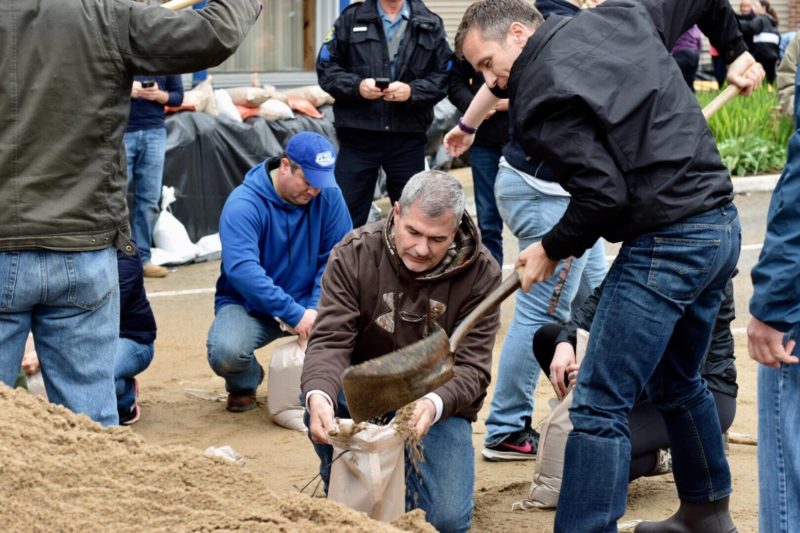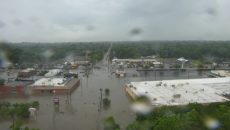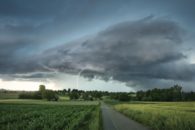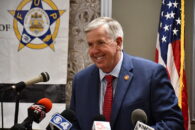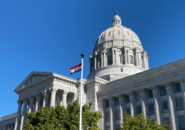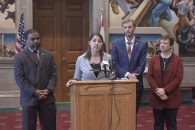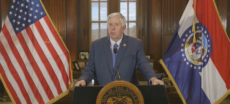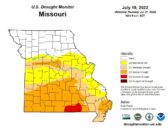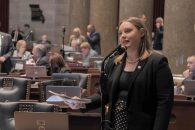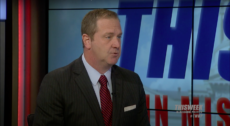JEFFERSON CITY, Mo. – The state of Missouri is still in the process of recovering from deadly flooding that roared through the state last week, but the question on the minds of many is this: will a federal disaster be declared?
The Show-Me State has expended all available resources to provide relief to those affected by the floodwaters, but many are now hoping and praying that President Donald Trump will declare the state a disaster zone.
The main disaster aid comes from the federal government through the Federal Emergency Management Agency, and the man holding the trigger to release those funds: President Trump. To release the funds, which would allow victims to qualify for grants of about $3,000 through FEMA and business loans through the Small Business Administration, he has to declare the floods a federal disaster.
Several of Missouri’s politicians have stated their willingness to advocate for federal assistance, including U.S. Senator Roy Blunt, Rep. Jason Smith and Rep. Billy Long. Smith says he’s had “multiple” conversations with the White House about a federal disaster declaration, and each of the politicians says they have been in touch with Gov. Eric Greitens as well.
State lawmakers are waiting to see how much damage there is, and since the budget was passed last Friday, any more funds necessary would most likely be done through a supplemental appropriation during next year’s session.
The State Emergency Management Agency received $138 million last year, and an extra $4 million was put in the state’s budget after flooding that occurred in 2016, allowing Missouri’s governor to activate the National Guard at a moment’s notice. Another $4 million should be available for the governor to use on July 1, thanks to the passage of the budget during the legislative session last week.
But victims also have other options available for aid, like deductions for flood damage to property through the IRS’ casualty loss program, while farmers can take advantage of some funds through the U.S. Department of Agriculture. FEMA grants, Small Business Administration low-interest loans, and National Flood Insurance Program payments.
If that decision is going to come, it could happen over the course of the next few days. In 2016, President Barack Obama declared an emergency for the 33 counties affected by flooding that had occurred in late December just a week after the first flooding. Within a few months, those counties had received more than $90 million in disaster relief. And while Greitens, according to KWPM, says he’s confident about a federal disaster declaration, but the fact of the matter is that there’s a process, which could take months.
To begin the process, the governor of the state must first declare the area a state disaster. The Robert T. Stafford Disaster Relief and Emergency Assistance Act states that: “All requests for a declaration by the President that a major disaster exists shall be made by the Governor of the affected State.”
The first step in the process is for the governor to request a joint federal/state Preliminary Damage Assessment (PDA). The assessing team will survey the impacted areas to determine the extent of the disaster and its impact on the individual and public facilities. They also evaluate what type of federal assistance may be needed. The PDA is required to be completed within 30 days of the disaster’s occurrence.
Once the PDA is completed, the President has three options when it comes to making a declaration: he can either make an emergency declaration or a major disaster declaration. An emergency declaration does not provide much relief, as it limits what can be done in terms of aid and comes with a $5 million cap. Any expenditures beyond that cap must be reported to Congress. His other option could be to do nothing.
Greitens has been in contact with the White House on the matter since the flooding first began, saying in a Facebook post during the time of the flooding that they had “opened communications with the White House early to ensure that we can unlock federal disaster relief funds as quickly as possible.”
Just spoke with POTUS @realDonaldTrump about the historic flooding in MO. He said he’s behind us, and here to help the people of Missouri.
— Eric Greitens (@EricGreitens) May 1, 2017
Missouri has been declared a major disaster zone each year since 2002, through either severe storms, flooding or tornadoes, except for the years of 2012 and 2005. Only nine emergency declarations show up in FEMA’s records.
Michael Cappannari, the External Affairs Director for FEMA Region VII, confirms that Missouri has requested a PDA, which they received on Friday. Now that they have received the request, they can begin the assessments. Cappannari says that those assessments are expected to begin later this week, but can take upwards of two weeks to complete. Once completed, the request is sent up the chain, where it then falls on the President to make a decision.
President Trump has approved emergency declarations before. In February, he signed off on an emergency declaration in regards to the emergency conditions resulting from the potential failure of the emergency spillway at Lake Oroville Dam. He also approved a major disaster declaration for the Resighini Rancheri, ordering federal aid to help the tribe’s recovery efforts in the areas affected by flooding in February. That declaration from the President came on May 2, 2017.
To see more on how the process works, and what kind of aid is included, visit FEMA.gov.
Benjamin Peters was a reporter for The Missouri Times and Missouri Times Magazine and also produced the #MoLeg Podcast. He joined The Missouri Times in 2016 after working as a sports editor and TV news producer in mid-Missouri. Benjamin is a graduate of Missouri State University in Springfield.

